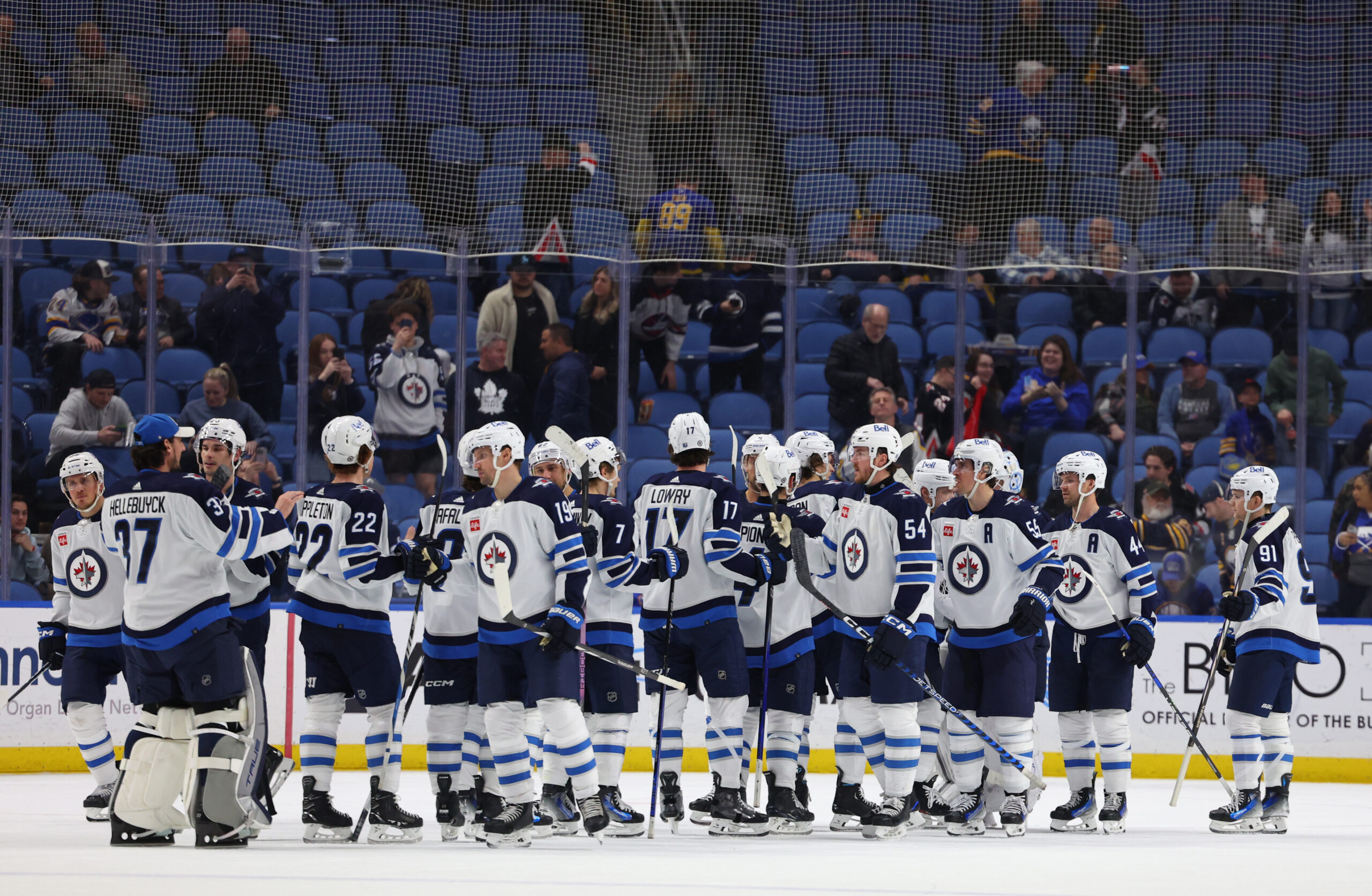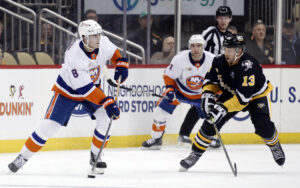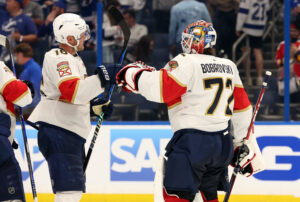The Winnipeg Jets‘ strengths are enough to make a deep playoff run. Furthermore, they have few weaknesses at the moment. However, there are a lot of conversations on social media related to how the Jets will perform in the playoffs. This comes after seeing some of the ebbs and flows of the current 2023- 24 National Hockey League season. Half of the fan base is begging for better roster deployment and optimization. Meanwhile, the other half has put their full trust in a veteran coaching staff that has helped the Winnipeg Jets climb to second in the league in points percentage. In this piece, I’ll break down the Winnipeg Jets’ strengths and weaknesses.
For reference, all statistics/analytics will be taken from MoneyPuck.com unless stated otherwise.
Breaking all the Winnipeg Jet Strengths Down
Goaltenders
Analytically, the Jets have had a lot of players shine this season. Which makes sense, given their position in the standings. Anchored behind elite goaltending from both Connor Hellebuyck and Laurent Brossoit. Moneypuck has Hellebuyck eons ahead of every other goaltender in the league in terms of Goals Saved Above Expected (GSAx). While Brossoit is in a very respectable top-20 position. However, if you sort the numbers per ice time as he is a backup. He skyrockets all the way to eighth, while Hellebuyck remains in first. Yes, the tandem’s save percentage and goals against average look just as good, but those numbers can be inflated by pristine team defence. Even with a top-ten defensive team as preventing scoring chances this season, the Jets’ goalies have been phenomenal. One of the biggest Winnipeg Jets strengths this season has been goaltending.
Defensive Core
Josh Morrissey has followed up an elite, yet a tad bit one-dimensional, offensive season in 2022-23 with an even better two-way-driven performance this year. He went from breaking even in terms of 5-on-5 scoring chances for and against last season, to controlling 53% of them this season. Furthermore, when he’s on the ice this season at 5-on-5, he’s giving up less expected goals against. Morrissey is proving how dominant he is while all but guaranteeing his spot on Team Canada’s 2026 Olympic roster as their second-best defenseman behind Cale Makar.
The bottom-four of the Jets defensive pairings are hit or miss. Brenden Dillon has recovered from a slightly below-standard 2022-23 season and rebounded to his normal self. The problem is Neal Ponk has also been his normal self. For reference, from the eye test, a coach sees Pionk as a player who tries hard, is physical and can move the puck on the breakout. Yes, he is a good puck-mover but he is not even close to being a net positive when you take into account his defensive shortcomings. Over the last two seasons, he has been the only Winnipeg Jet defender who has lost their minutes. He has been out-chanced repeatedly while every other Jet defender has broke even or won their matchups. For the past three years, the Winnipeg Jets have had a Neal Pionk problem that they refuse to fix.
The bottom pairing has been very successful. Yes, being sheltered like a third-pairing usually is, but still they lead the entire league among defence pairings in the amount of chances they give up per 60 minutes of ice time. Nate Schmidt seems to have lost foot speed, but Dylan Samberg’s steady presence has been able to cover for that while also painting a potential future picture with Brenden Dillon being a pending unrestricted free agent. Even with some holes on the back-end it has been a Winnipeg Jet strength this season.
Forward Core
Two members of the Jets “so-called” third line (they play way more than the actual second line) have been extremely productive, and not only breaking-even in extremely tough matchups, but winning them handily. Yes, the extremely hot start at the beginning of the season was not sustainable. But after a little bit of fallback, captain Adam Lowry and Nino Niederreiter have done a lot of the heavy lifting for this Jets team.
Lowry and Niederreiter have both proven throughout their careers that they can be two-way forces. Mason Appleton on the other hand is the most average forward in hockey. He plays an extremely simple game while being a solid forechecker, but that’s about it. Appleton isn’t a jack-of-all-trades-master-of-none either, as he’s pedestrian at everything. He has been a solid passenger on the Jets third-line, but nothing more. It’s pretty obvious when Appleton only controls 51% of the scoring chances when he’s on the ice at 5-on-5 while Lowry and Niederreiter control 55% and 56%.
I feel like a broken record, but the whole Nikolaj Ehlers debacle cannot be avoided. However, if you want my take on it, Murat Ates could not have summed it up any better in his recent article from The Athletic. Mark Scheifele and Kyle Connor create a ton of chances via elite passing, vision, and shooting finish. But they give up just as many in their own end. Yes, Ehlers is prone to giving up the occasional high-end chance as well, but when you’re carrying the puck into the zone as effectively as he does it keeps the puck out of the Jets defensive zone altogether.
Winnipeg Jets’ Strengths are Enough Push the Chips All In
Analytically the Jets are a very good team with many great pieces. However, compared to other contenders, the team lacks star power at forward, and depth at the right defencemen position. As a result, their ceiling is lower. Better forward line optimization is the best possible solution up top. While trading for a right-handed defenceman seems to be the best solution on the back end. Winnipeg has the pieces to potentially make a deep playoff run. But management and coaching could get in the way of guaranteeing that run. Mark Chipman wants fans to buy more tickets, pull us in better optimization and more upgrades at the trade deadline.
Main Photo: Timothy T. Ludwig-USA TODAY Sports






